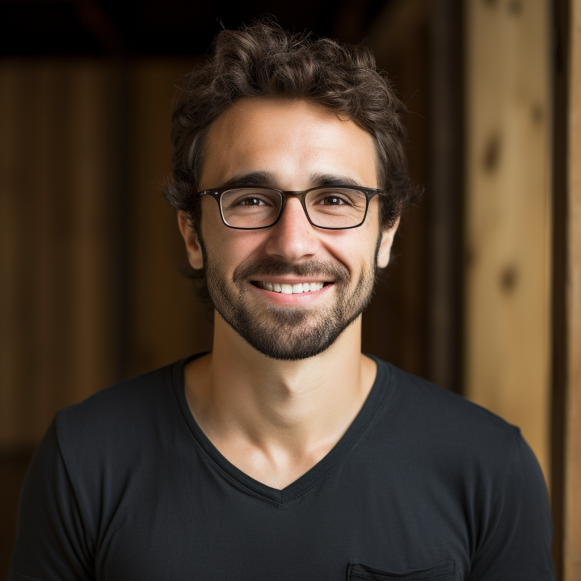5 lessons from working with MrBeast, according to the president of the top YouTuber’s company

- Marc Hustvedt is the president of YouTube’s most popular channel, MrBeast.
- An entertainment vet, he now spends his days guiding the YouTube star.
- Insider spoke with Hustvedt who shared his insights from working for a YouTuber-led business.
MrBeast president Marc Hustvedt compares Jimmy Donaldson’s stardom and impact to that of a professional athlete.
“To some extent, this is a sport,” Hustvedt said. “The same mindset that you need to win at YouTube is the same mindset that you need to obsess over the body mechanics of throwing a baseball.”
Hustvedt, an entertainment industry veteran and serial entrepreneur, was named president of Donaldson’s digital operation in 2021. Hustvedt was the CEO of React Media, the company behind YouTube channels like React and Kids React, before moving to Greenville, North Carolina, to work full-time for Donaldson. He also cofounded the Tubefilter creator blog and the Streamy Awards.
Meeting early YouTubers like iJustine and Philip DeFranco, he says, helped him understand the value and importance of content creation.
“To me, creators, particularly YouTube creators, always stood out,” Hustvedt explained.
Hustvedt has advised Donaldson, 25, who has one of the most popular YouTube channels with 169 million subscribers, on expanding his business beyond the platform by launching products and developing a global strategy.
In June, Insider spoke with Hustvedt at VidCon, the annual conference for creators, fans, and industry professionals, about what he’s learned from working with Donaldson.
Here are his five key takeaways from working with YouTube’s most popular creator:
1. Blockbuster content defines a successful YouTube career
MrBeast’s most popular content has not only gone viral, but it has also set a new standard for content on YouTube. His main channel has 18 videos that have received over 200 million views.
“A 100-million-view video is exponentially more valuable than 20 5-million-view videos,” Hustvedt asserted. “Understanding the value of a hit and the sort of blockbuster theory is really key to what we’re doing.”
Anita Elberse, a Harvard Business School professor, wrote the book “Blockbusters: Hit-making, Risk-taking, and the Big Business of Entertainment,” which Hustvedt referred to.
“Get really, really good at making the content,” he advised. “Be obsessed with creating the best content and understanding how content discovery algorithms work.”
2. Creators can only master so much
There are more platforms — and content formats — than ever before, from podcasts to short-video to YouTube.
“For some, that works,” Hustvedt admitted. “However, if you do too many things, you risk burnout.”
He cautions creators against getting too carried away with jumping on every new platform. First, concentrate on becoming an expert in one area.
To avoid burnout, creators should consider growing their teams by hiring in roles such as editing to offload work and give themselves more time to focus on what they do best.
“Right now, there are so many specialists who have emerged from non-traditional backgrounds,” he says of editors and thumbnail artists. “They’re right there, and you can collaborate with them and find them on social media sites like Twitter.”
3. Creators should remain in charge of their businesses and IP
“At a healthy, good creator company, the creator is in charge,” he explained. “They’re your owner, your CEO, your star, they’re everything.” You must determine how you will assist them. And construct the proper structure so that it does not fail.”
There are numerous examples of creators who received investment or were acquired that did not work out, he said.
For example, in 2018, Defy Media, the parent company of several popular YouTube channels such as Smosh and Clevver, went bankrupt. Smosh was eventually saved by YouTubers Rhett and Link, who bought the comedy collective and sold it back to Smosh cofounders Anthony Padilla and Ian Hecox this year.
“The really scalable creator businesses or content businesses have to be creator-led and creative first,” he says. “It sounds so simple, but it’s really, really difficult in practice.”
“A lot of businesses will get caught in the spreadsheet mindset at some point,” he continues, “focusing on labor, CPMs, number of videos, and what’s most optimal.” But you can’t really lead from spreadsheets. That was something I had to relearn.”
4. YouTube is king
Short-form videos and TikTok have caused significant consumer shifts. However, YouTube has remained true to its mission, which states that the platform’s three pillars are users, advertisers, and creators.
“That wasn’t just lip service,” he insisted. “They leaned in on the product, creating tools to help creators succeed, investing in so many different initiatives for all types of creators and niches, small and large, and the consistency of that ad product.”
Other platforms have arrived like “shiny bikes,” he said, but it’s a long game for creators, and YouTube has played it well so far.
“YouTube took it a long time ago, and they won and continue to win,” he said.
5. It’s time to go global
MrBeast only records his videos in English, but he has audiences from India to Brazil thanks to dubbing his content in native languages and using tools like YouTube’s audio track feature, which allows creators to add multiple audio tracks in different languages to their video.
MrBeast’s most popular video, a recreation of Netflix’s “Squid Game” with 464 million views, is available in 12 languages, including Russian, Arabic, and Thai.
“If you really want to win globally, you need to make sure that your content is in many languages, particularly the languages where there is growth,” he said.”Adopt a global perspective and learn from these other countries.”






